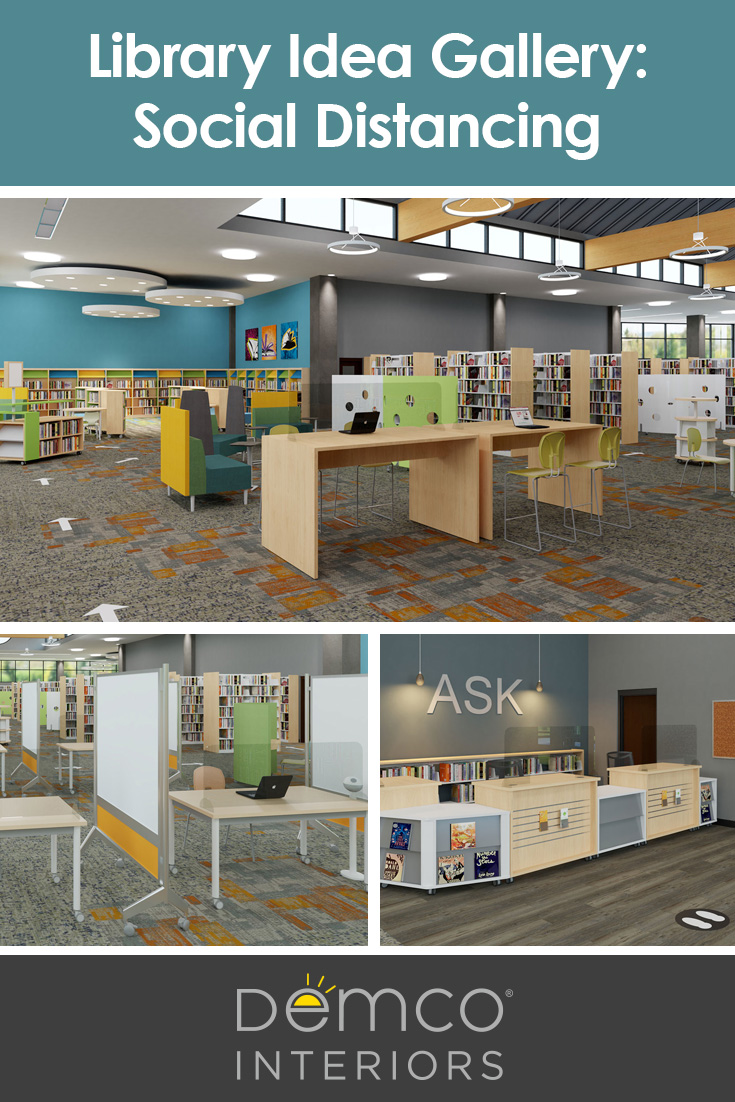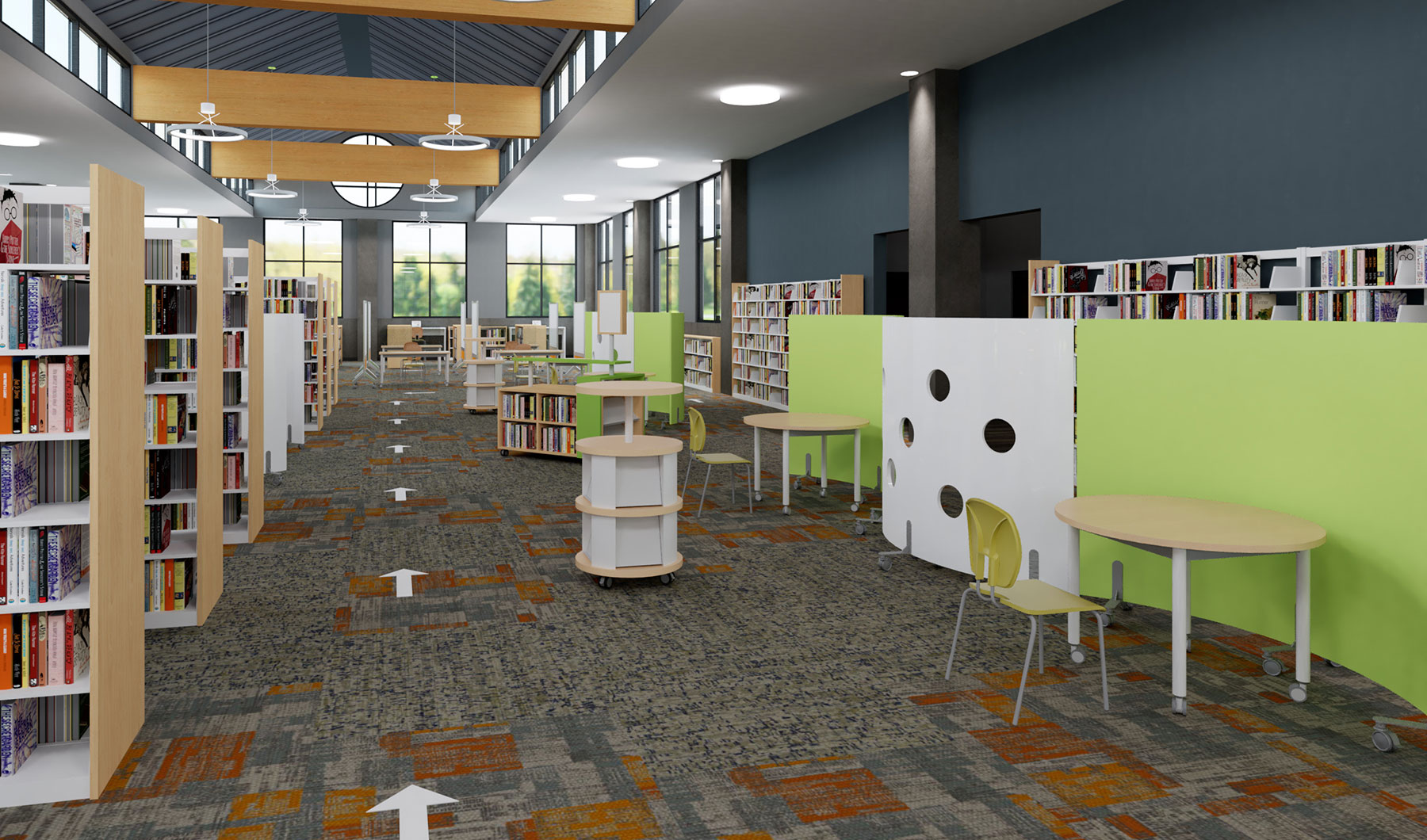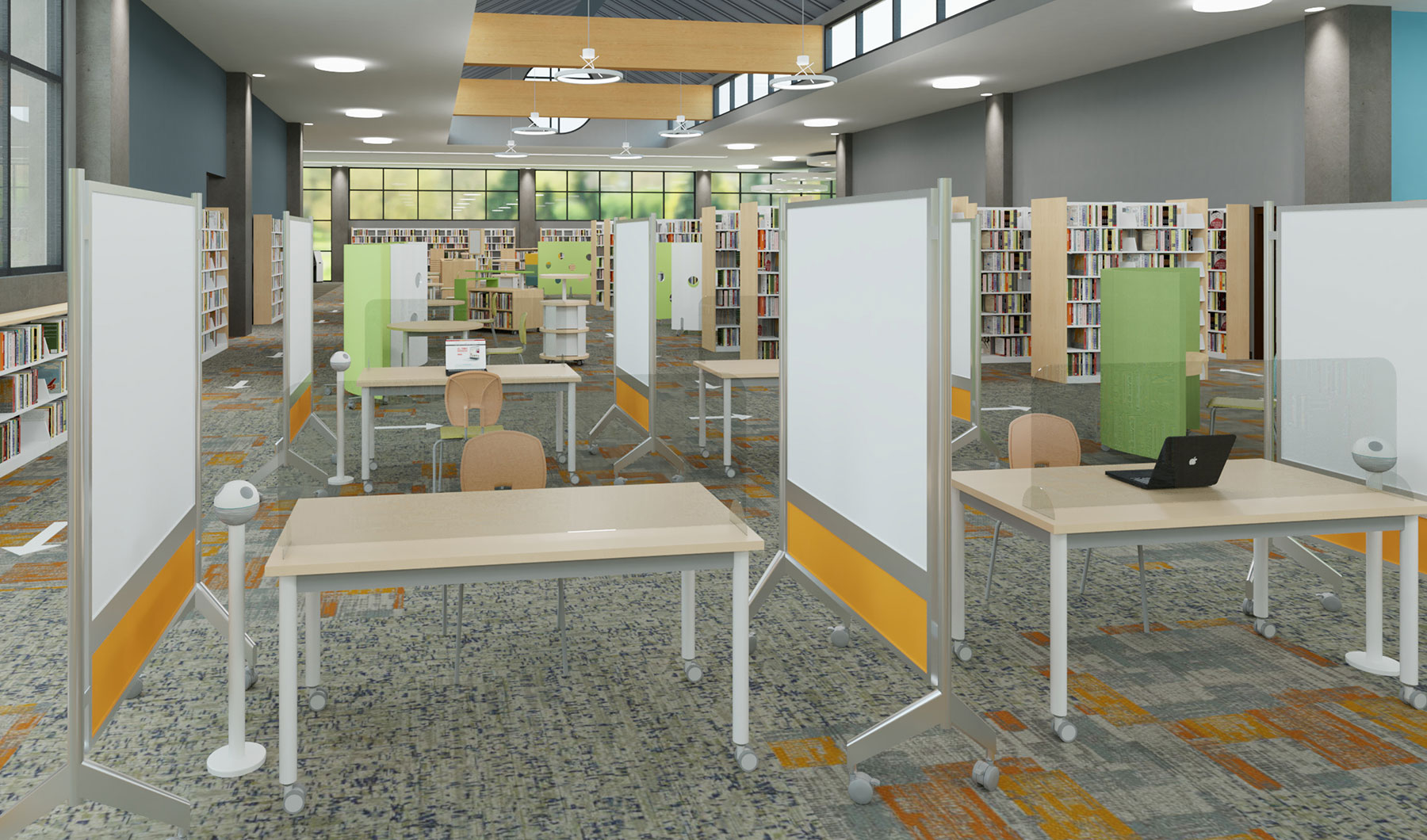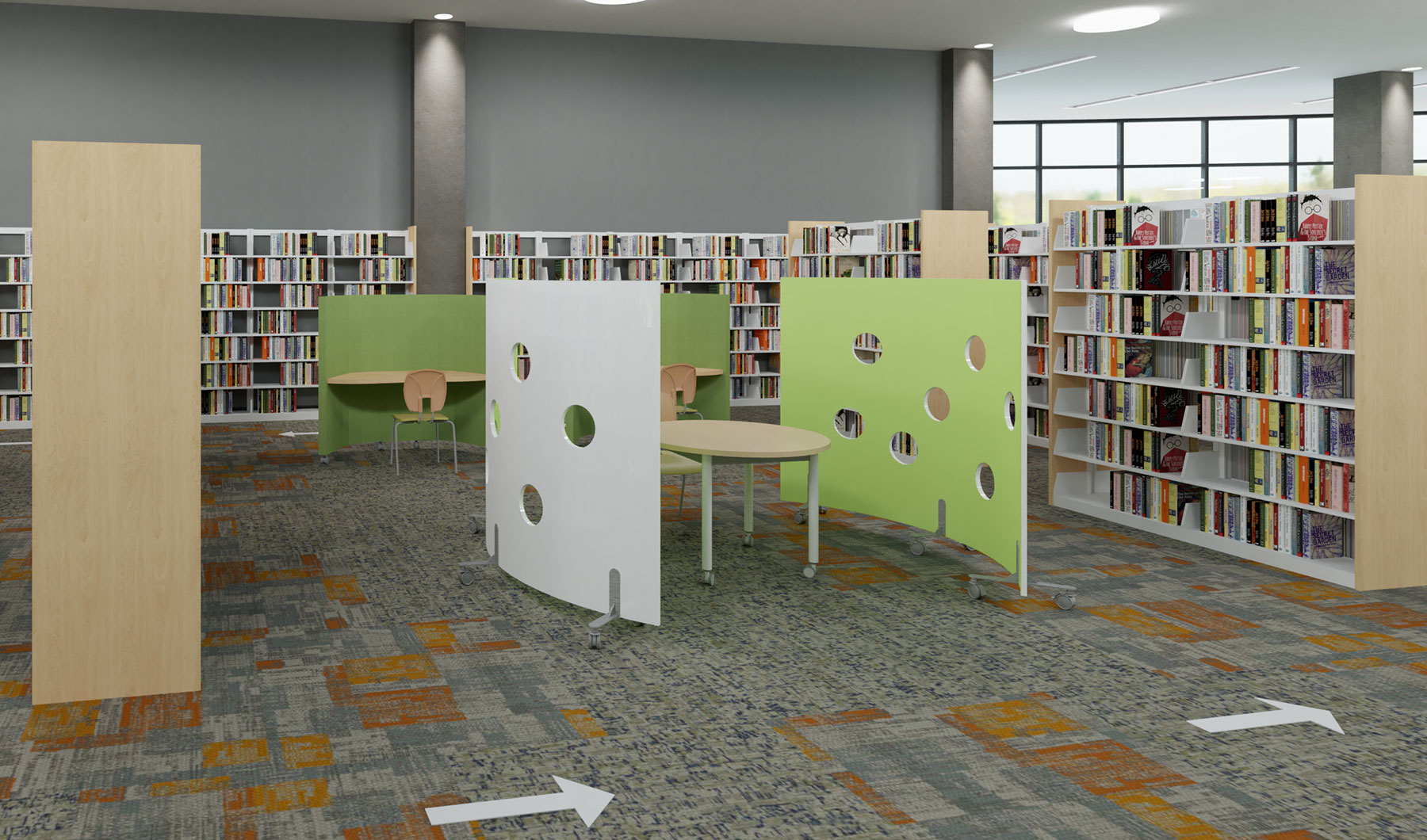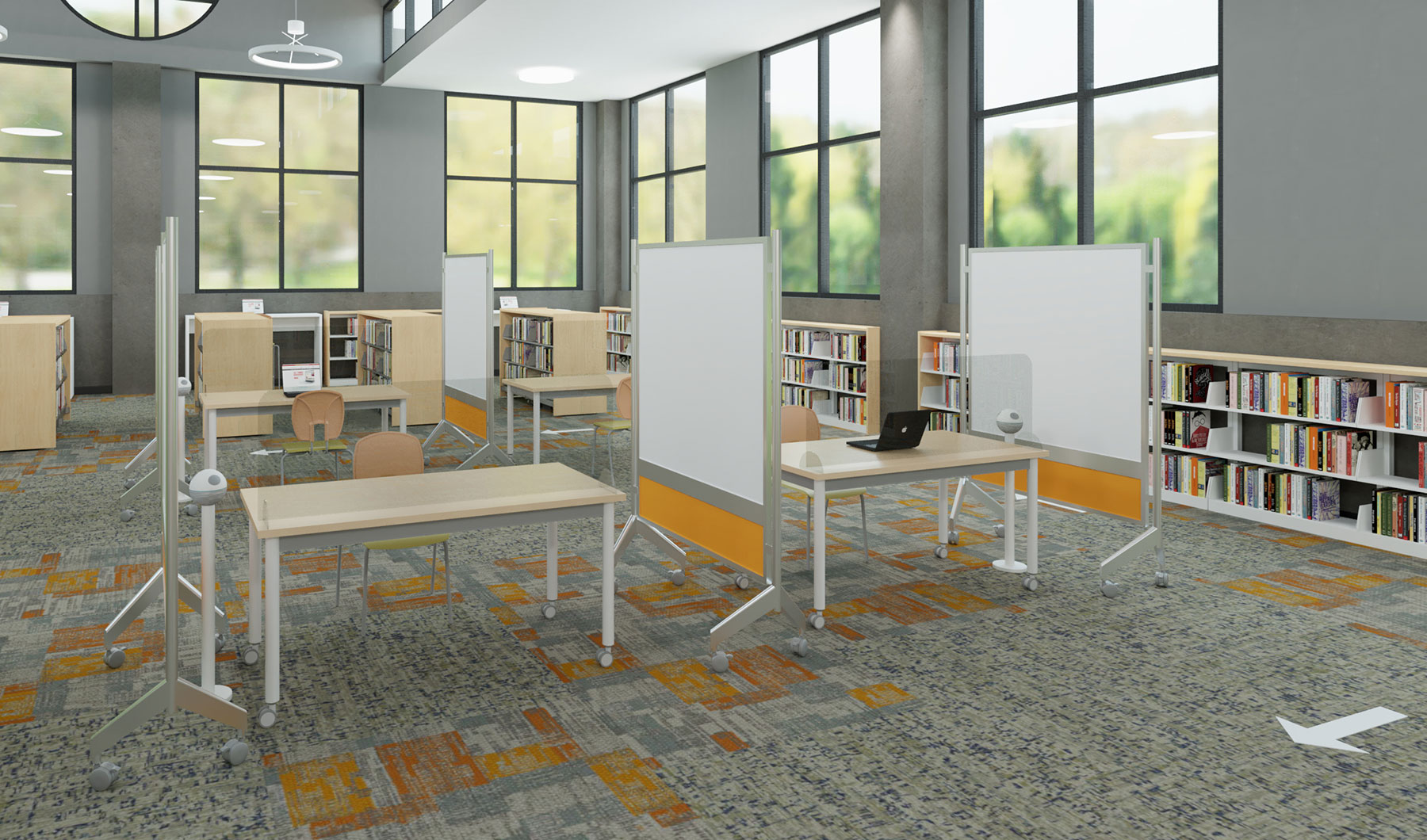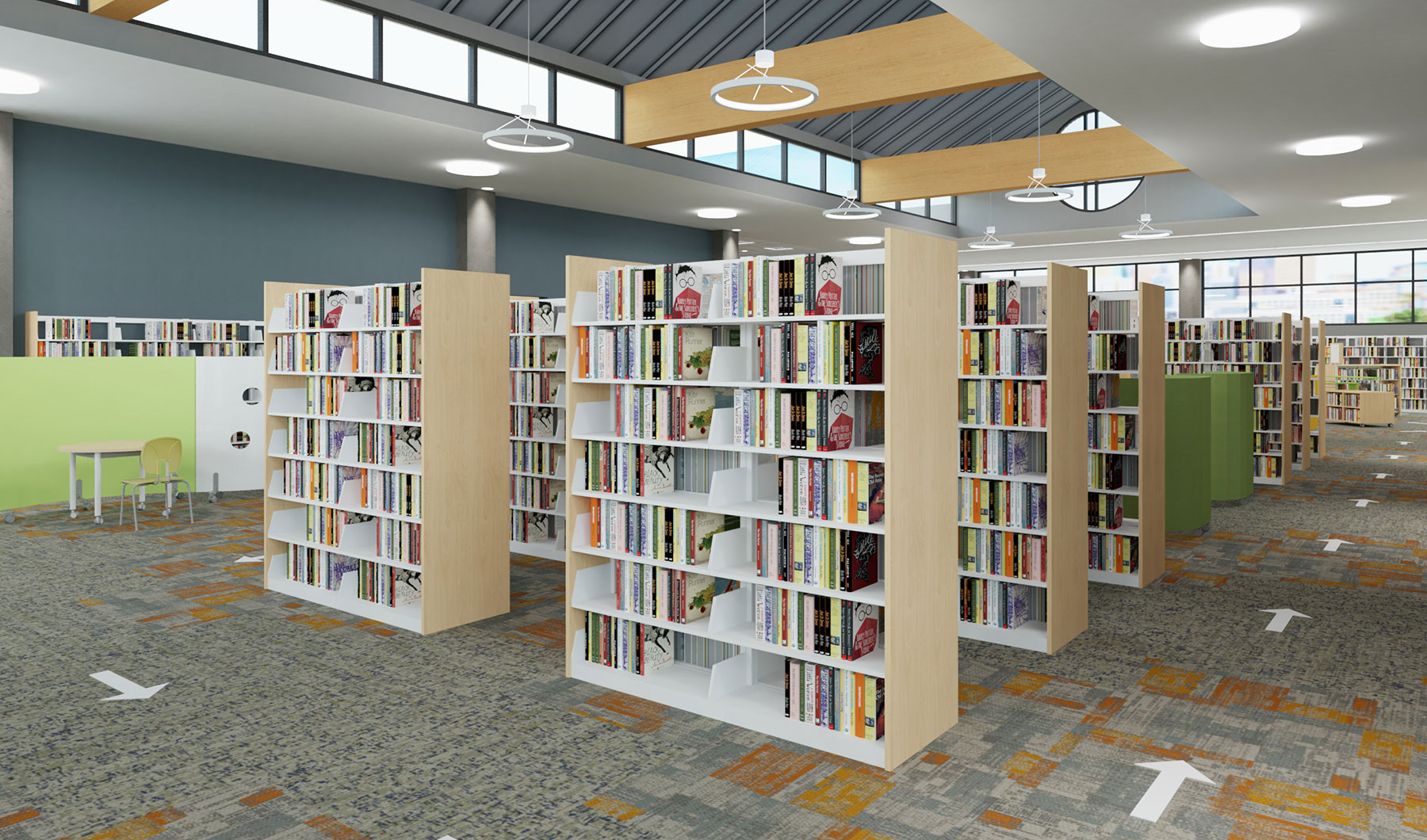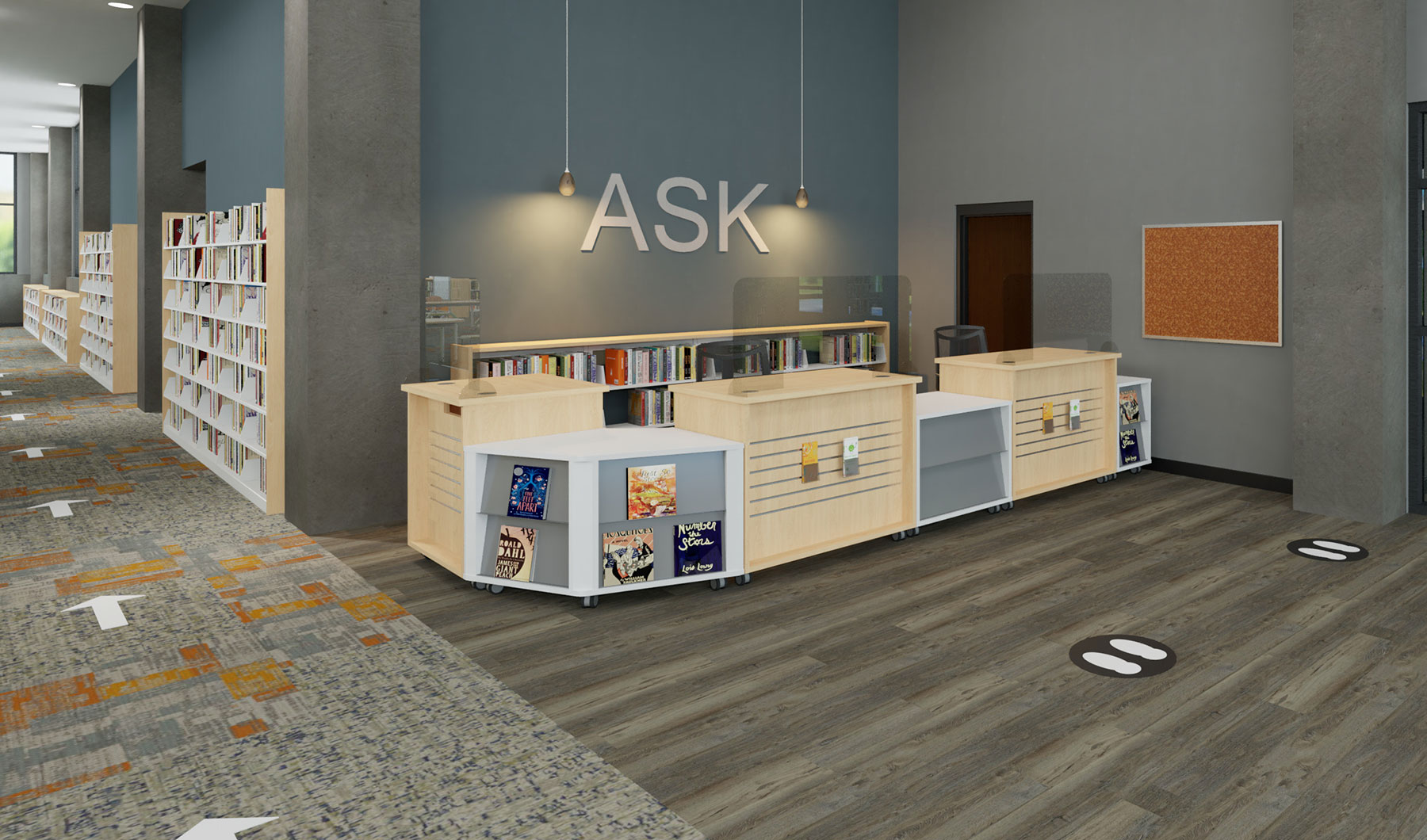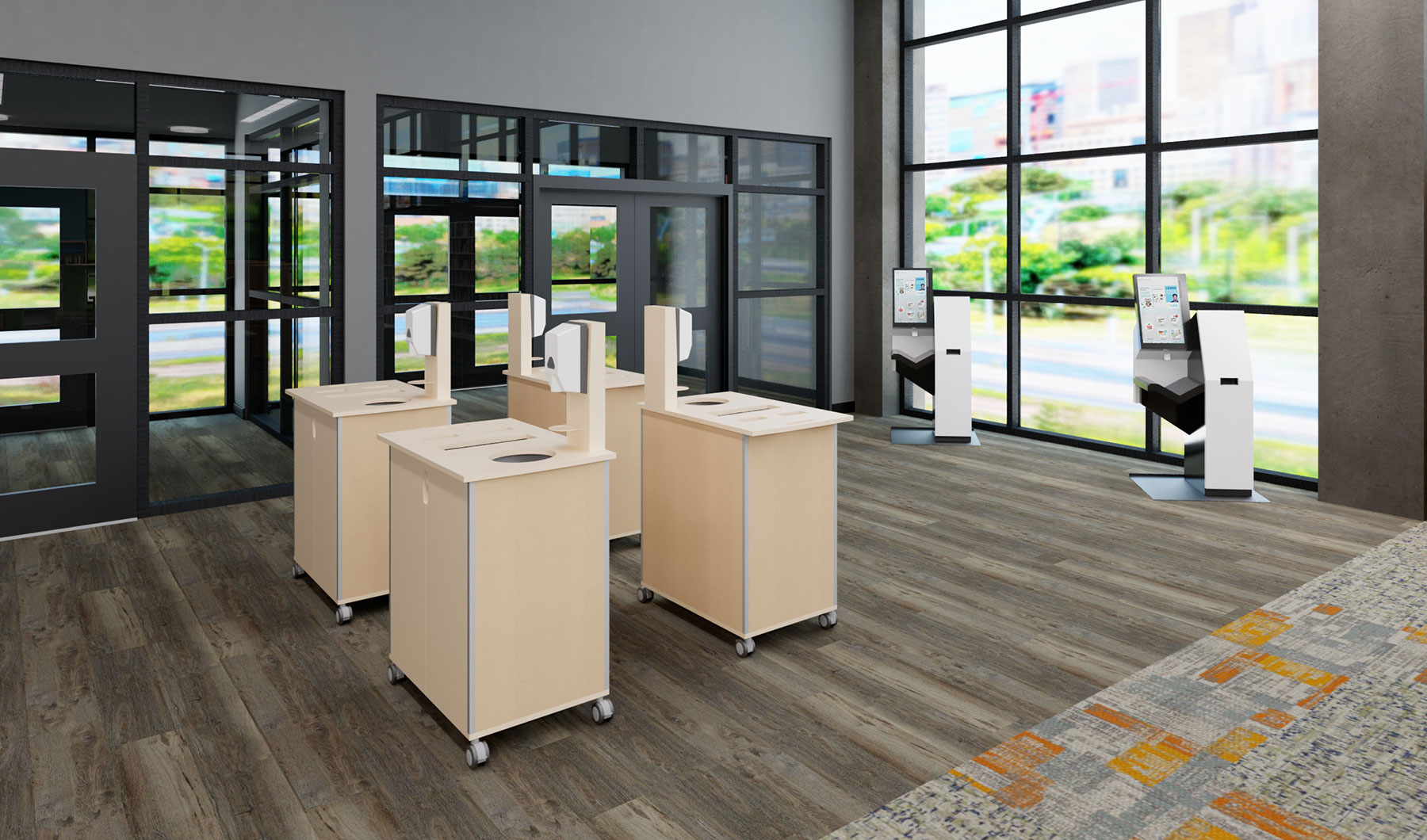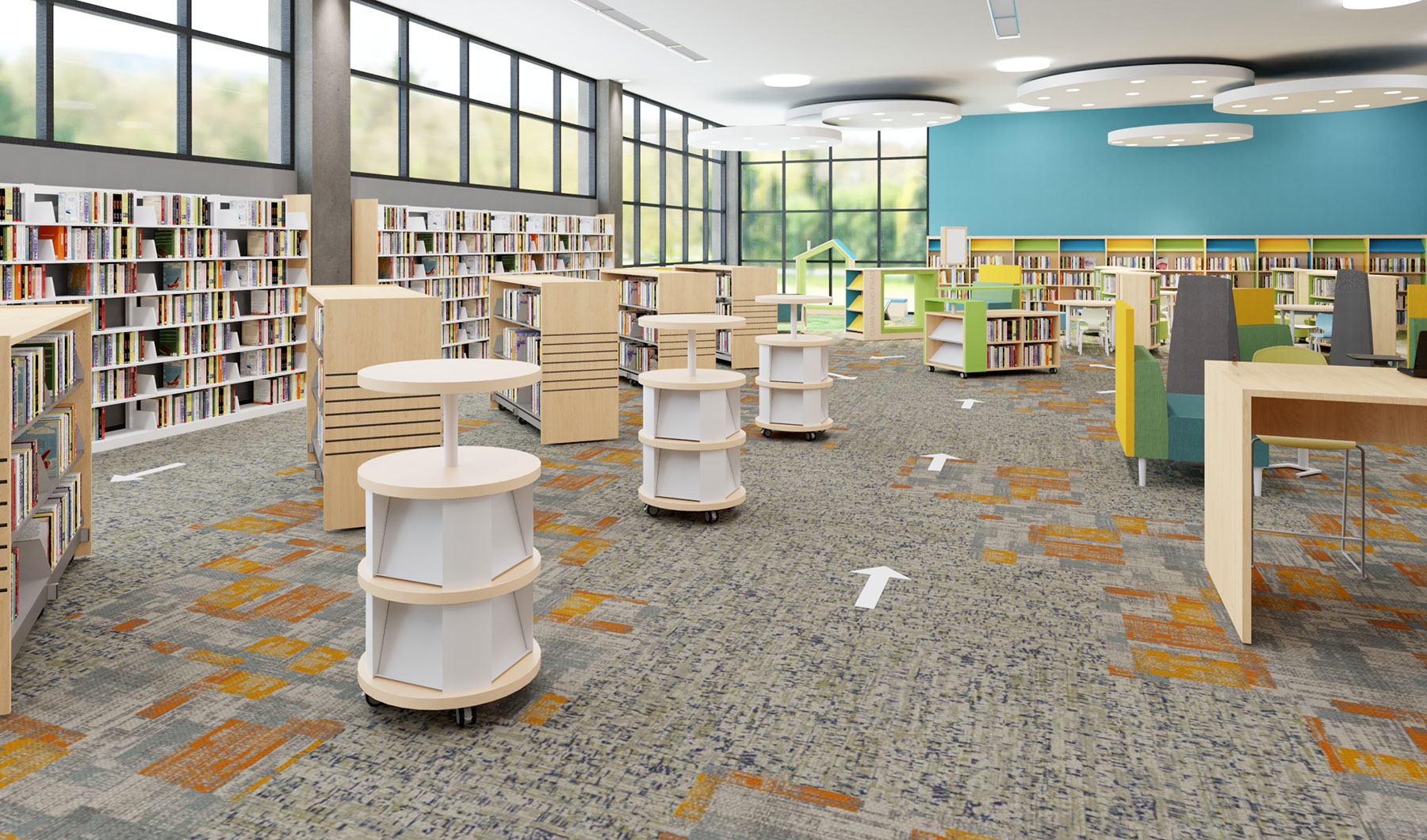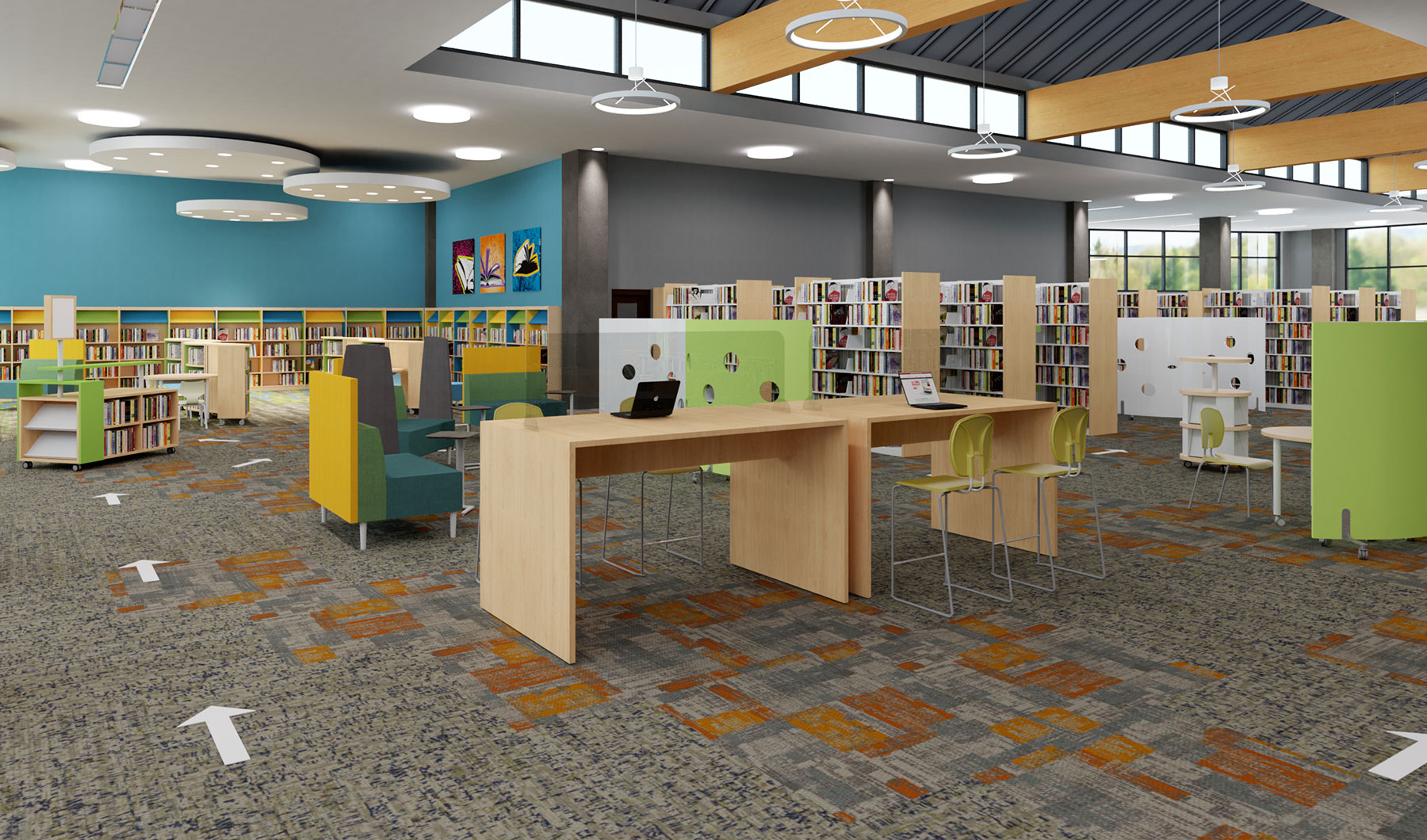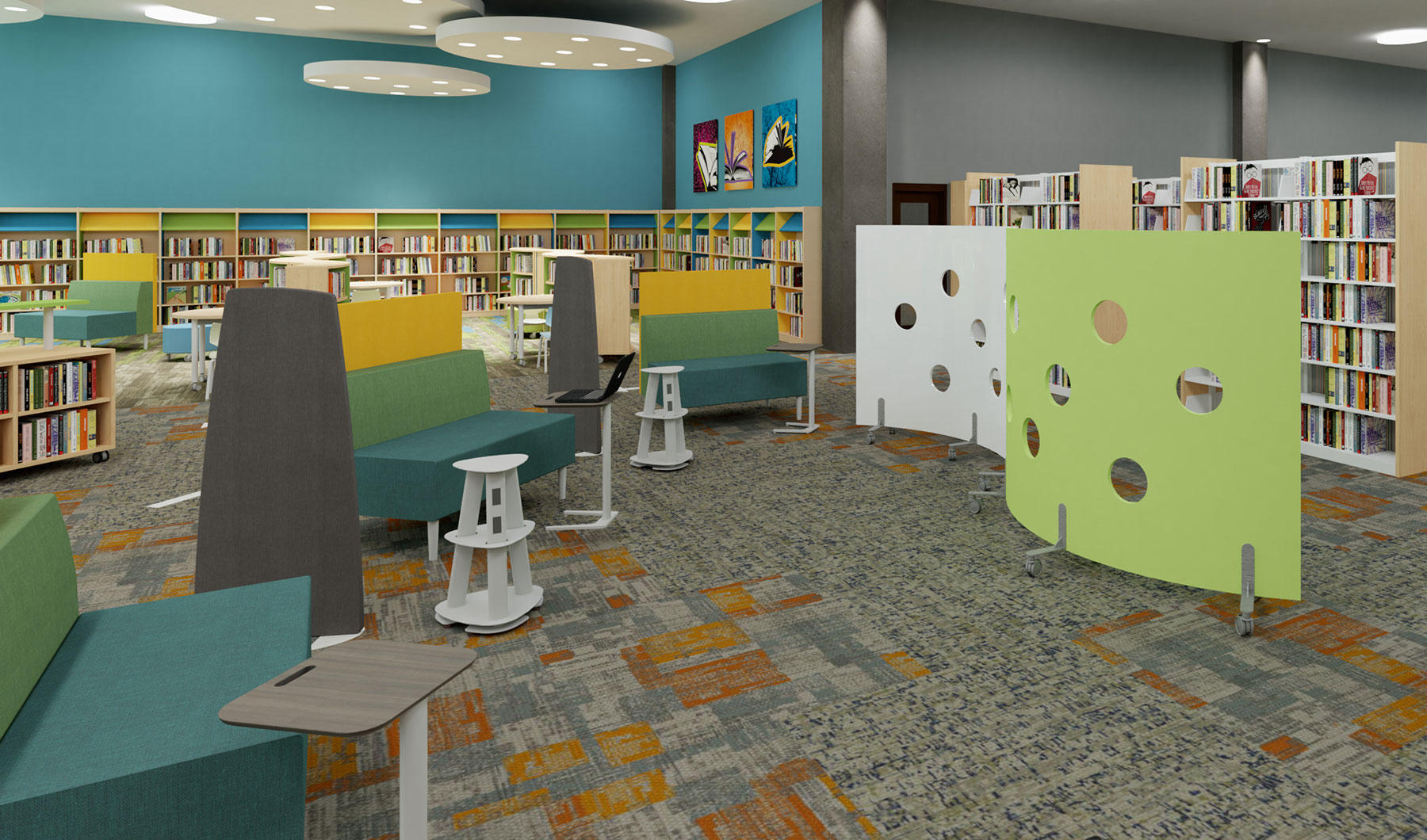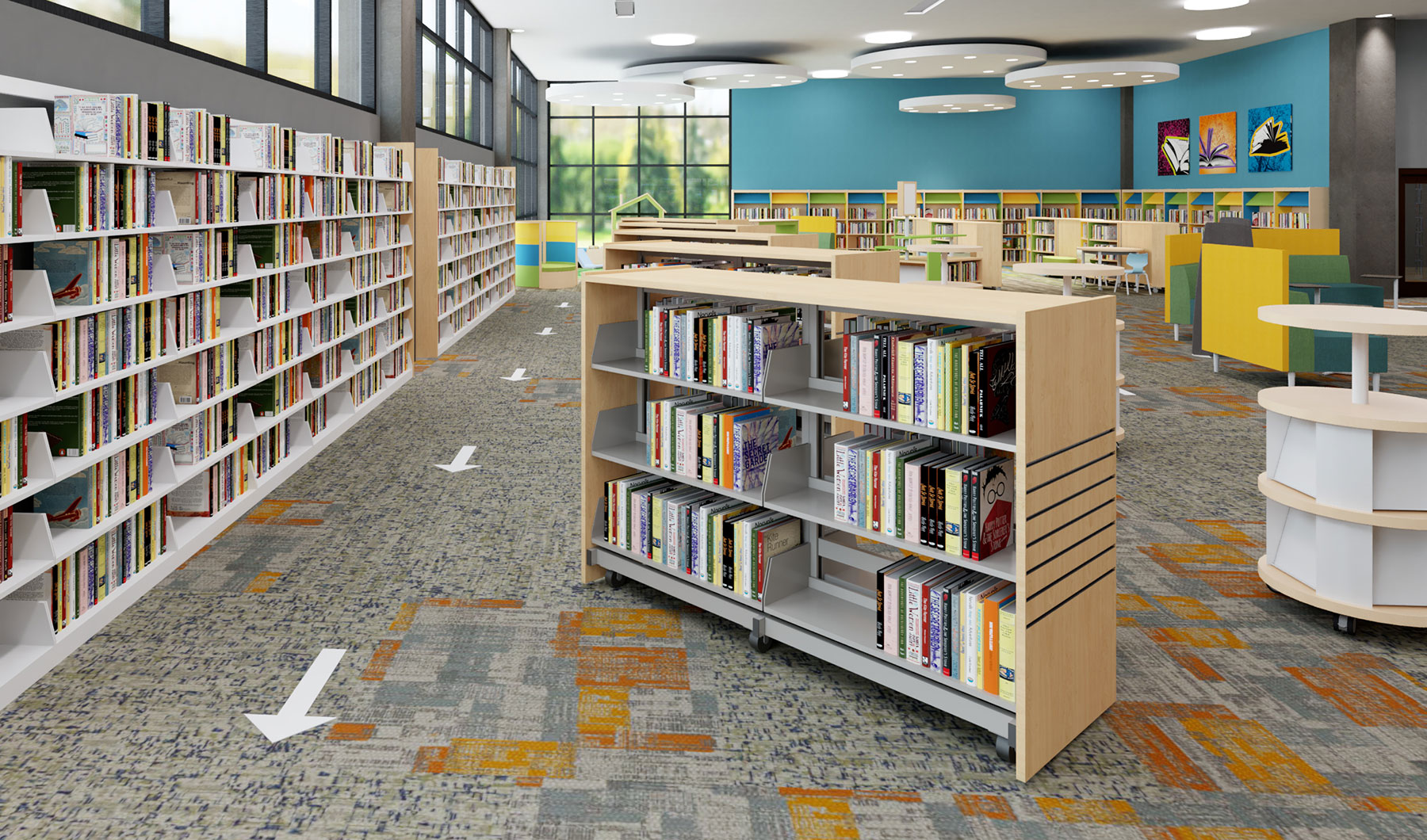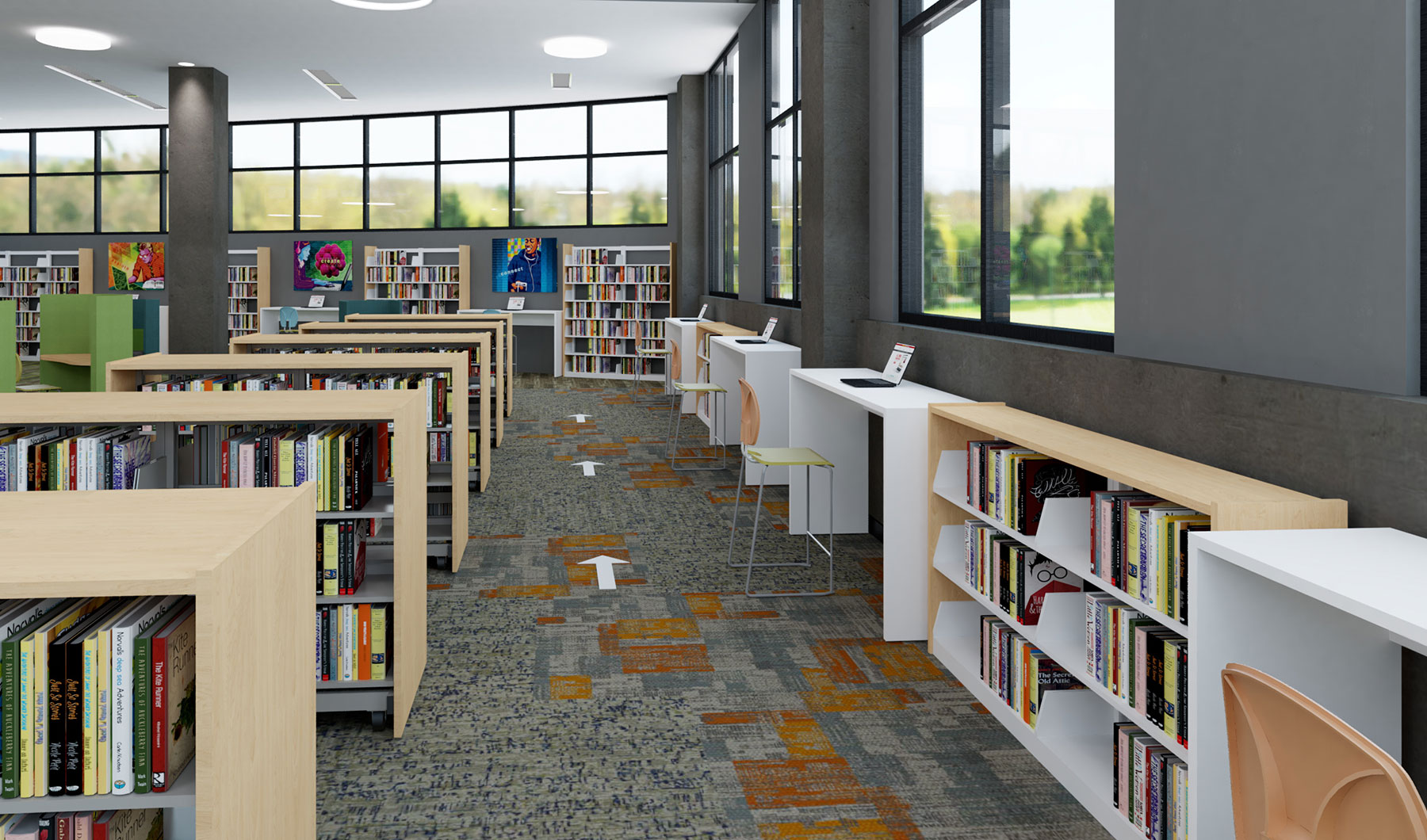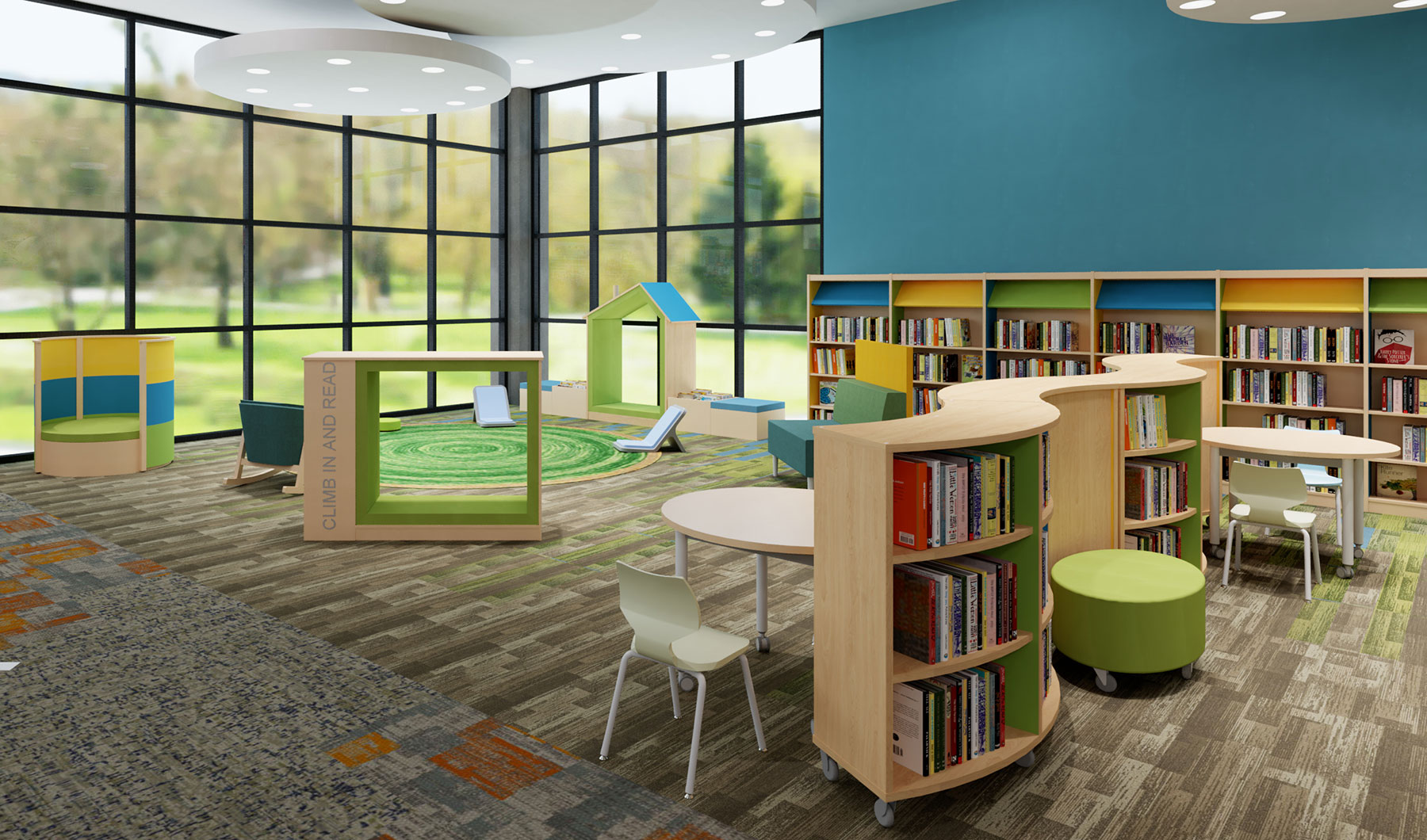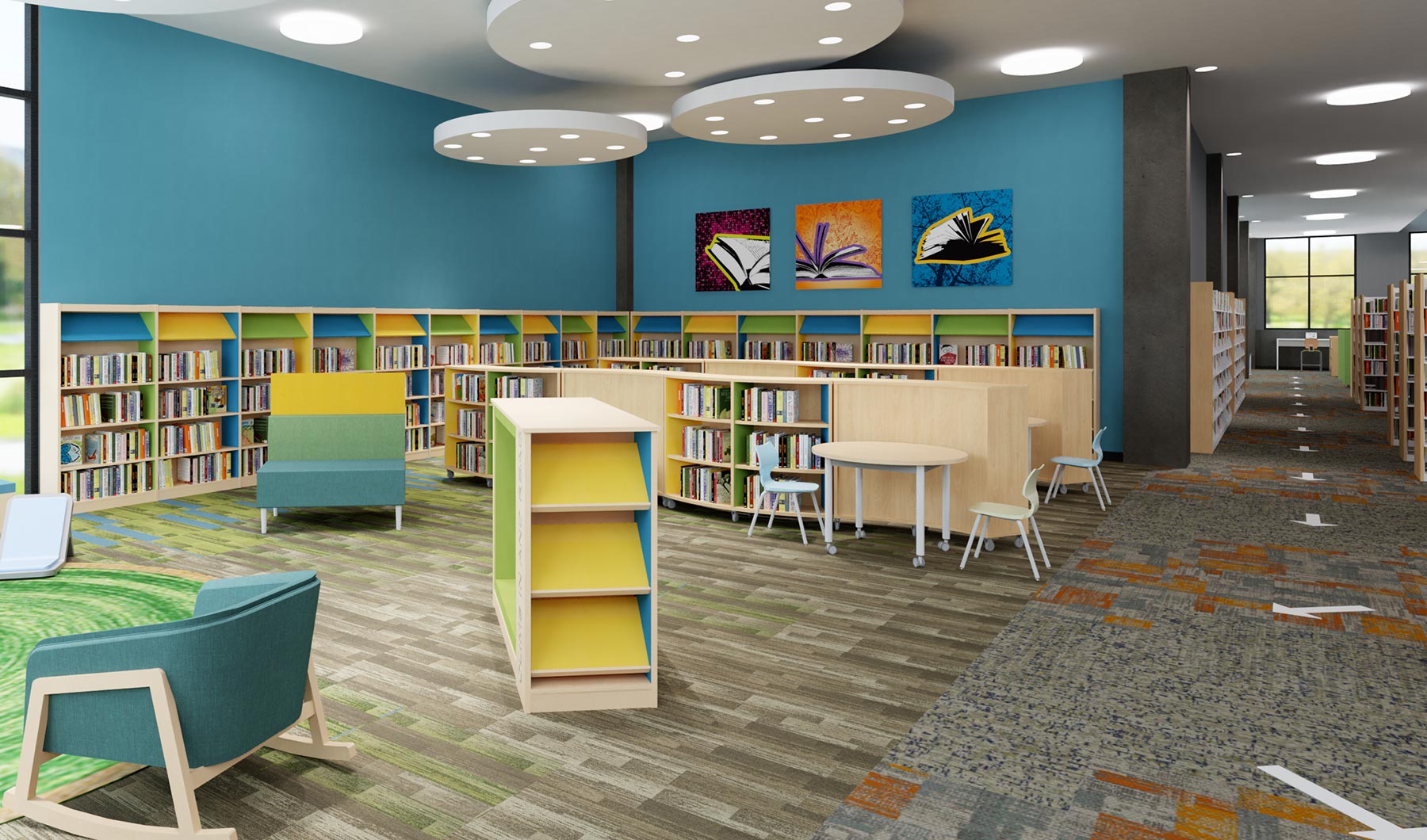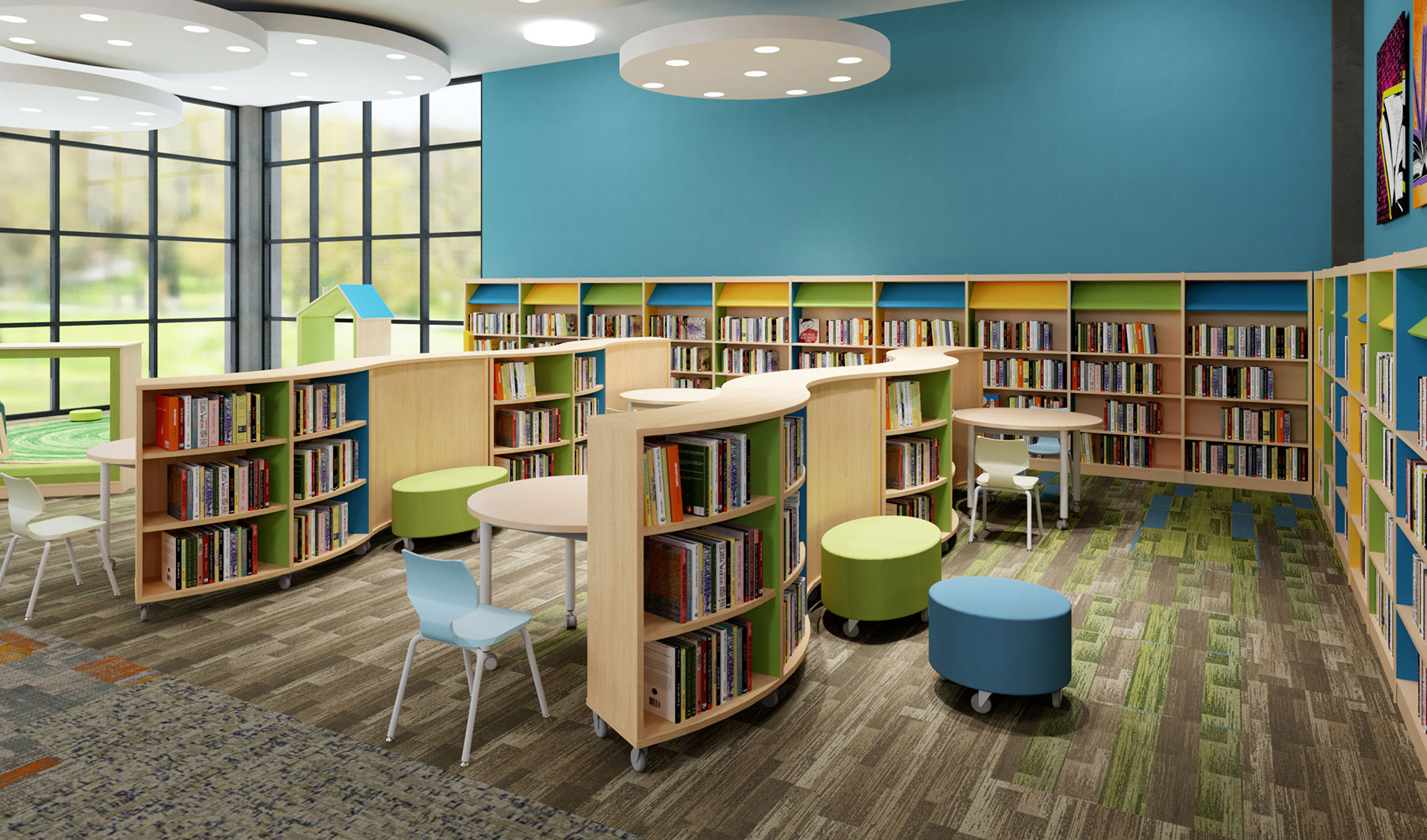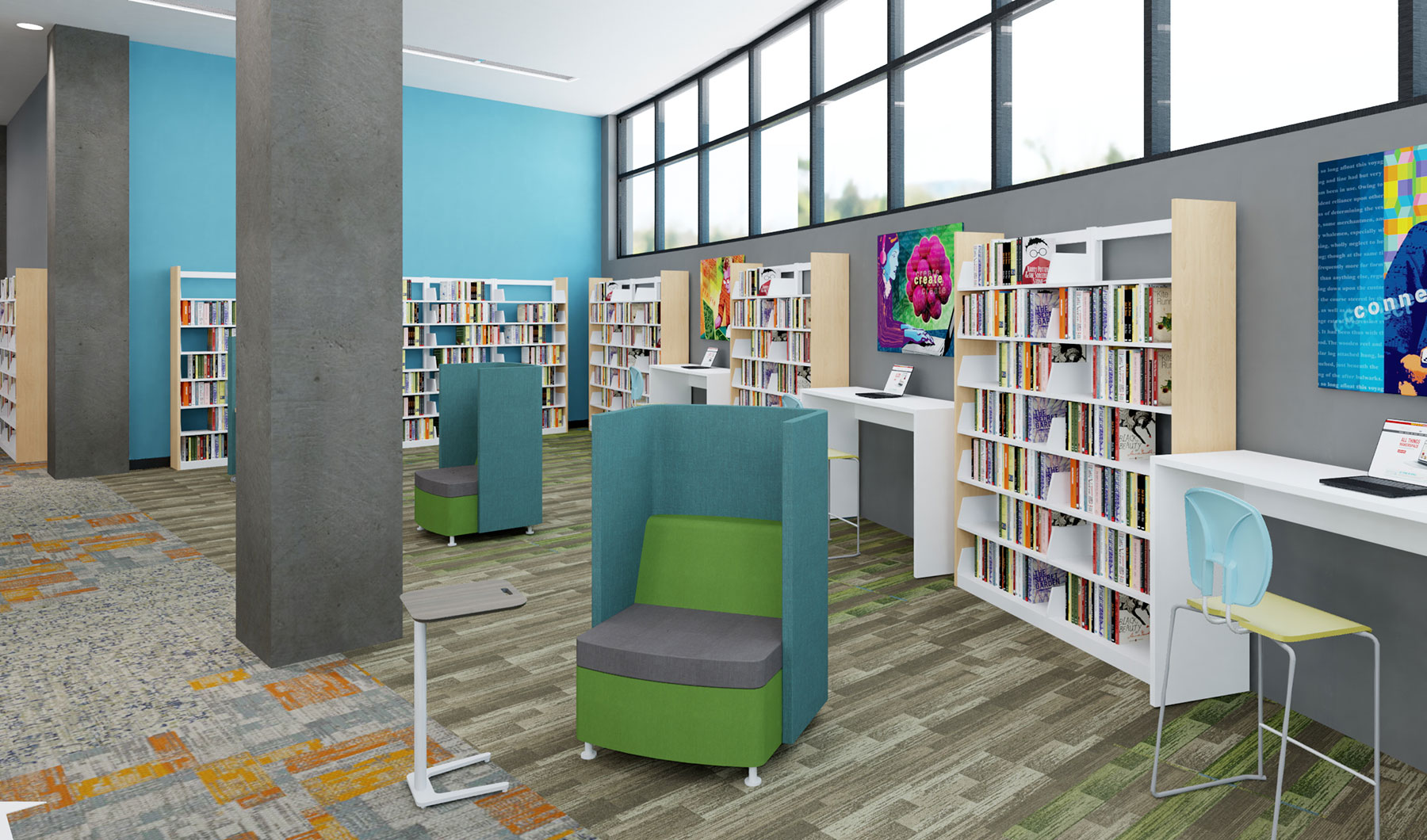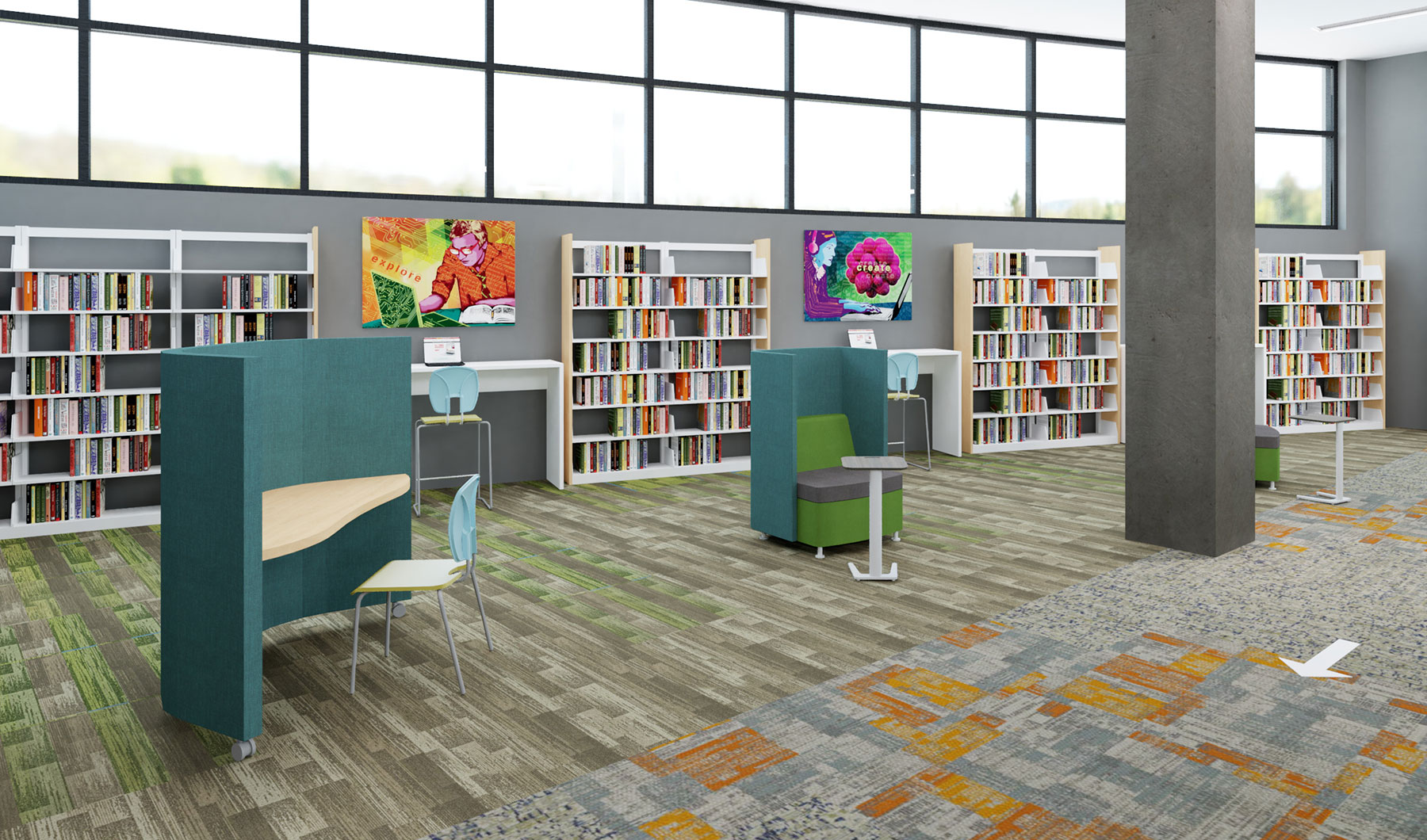Public Library Designed for Social Distancing

The COVID-19 pandemic has presented many challenges to libraries throughout the world. But as we’ve seen them do time and again, librarians have risen to those challenges and adapted their services for their communities.
As you consider how to also adapt your library’s facilities, Demco’s interior design team has created these virtual spaces to help you envision ways to keep patrons and staff safe through social distancing.
Key Design Concepts
Preventing the Spread of Germs
Good hand hygiene is critical to stopping the spread of germs. Portable hand-washing stations and hand-sanitizing stations provide patrons with multiple opportunities throughout the library to clean their hands. Placing a station at each of the entryways allows patrons to disinfect as they enter the library.
Self-checkout stations cut down on the transfer of materials between staff and patrons. Hands-free technology is ideal, but areas should be well-stocked with sanitizing wipes and hand disinfectant and feature ample signage asking patrons to disinfect after using.
Controlling the Flow of Traffic
It’s impossible to control every place a patron steps in the library, but there are ways to help guide them through the spaces.
Arrow floor decals are one of the simplest ways to help define the flow of traffic for patrons. In these design concepts, they create one-way aisles to encourage patrons to move in specific directions to help avoid “traffic jams.” Social distancing floor decals placed throughout remind patrons to maintain 6 feet of distance between themselves and others, especially at high-traffic points such as the circulation desk.
Strategically Arranging Furniture
Strategically placed furniture, mobile shelving, and portable barriers can help direct the flow of traffic and separate patrons as they use the library. Mobile tables and shelving are particularly helpful, as they can be rearranged quickly after staff has had a chance to observe patrons’ new traffic patterns.
Chairs arranged facing back-to-back and well-used perimeters help create more private spaces to avoid crowding. Shelving and lounge furniture also provide screening by blocking pathways and creating private spaces.
Making Use of the Perimeter
Positioning tables around the perimeter of the room with cafe-height seating and work surfaces facing the wall creates a natural barrier against face-to-face interaction. These can be used as individual reading nooks or computer stations, as they are located close to power outlets.
Creating Individual Workspaces
While many libraries have a mix of individual, small-group, and large-group gathering spaces, existing furnishings can be arranged creatively to facilitate more individual workstations, especially mobile tables and screens, which can be repositioned to accommodate 6-foot spacing.
Mobile whiteboards between tables and a limited number of chairs at each table cut down on patron interaction, and acrylic shields on tables create several single workspaces. Portable laptop desks also allow users to create their own workspaces in the confines of high-back seating or anywhere they choose.
Collaboration doesn’t have to be a thing of the past; however, for the time being many patrons will be utilizing technology to collaborate. Mobile charging stations help facilitate this by making power available in multiple locations throughout your library spaces.
Using Barriers for Separation
Free-standing room dividers define traffic flow routes around a smaller space and help support 6-foot spacing within that space. They also provide barriers to airborne droplets. The vertical dividers that feature built-in work surfaces create enclosed work spaces for patrons and are easy to clean, along with mobile whiteboards or other wipeable barriers.
High-back seating also provides a comfortable seating choice and adds a functional barrier between patrons. Acrylic health shields with pass-through windows serve the same purpose at the circulation and reference desks and between patrons on tables throughout the library.
The tall shelving creates a natural barrier and is strategically positioned with an additional aisle running through the middle to allow patrons to easily distance themselves when needed.
Creating Micro-Spaces for Children
Anyone who works with children knows that it’s almost impossible to get them to keep their hands to themselves. This space encourages children to keep their distance from each other by creating appealing micro-spaces for them, including floor seating, right-size tables, and unique cubby spots to relax and read. Adult seating is strategically placed to provide sight lines throughout, and mobile shelving helps separate seating spots.
The teen area features single high-back workstations with mobile laptop surfaces and cafe-height work surfaces along the perimeter to give teens a space of their own.

